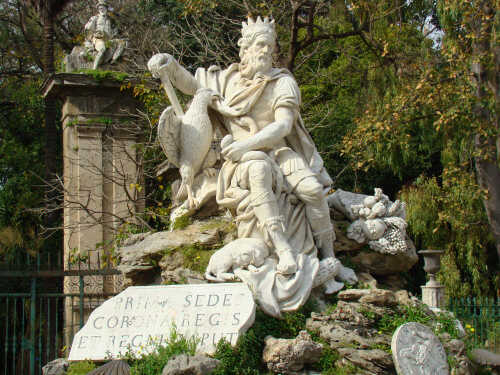Myth of the Genius of Palermo (genius loci of the city)
The following is an excerpt from the sheet "Cronos - Saturn"
The Genius of Palermo is considered the secular symbol that represents the civic virtues and identity of the people of Palermo in its different social classes, in a certain sense, for the Palermo people it represents a sort of secular god of happiness and independence and is often put in contrast with Santa Rosalia. He is depicted as a mature man with a split beard, crowned and embraced by a snake feeding on his chest.
An anonymous manuscript, preserved in the Municipal Library of Palermo, perhaps from the end of the 500th century, relates the Genius of Palermo with Saturn (Cronos) in fact it represents the Genius as the representation of "Saturn, god of earth and time, father of times and father of gods and men ”[Giuseppe La Monica: Mystery Sicily p.58]. Another element that connects Cronos with the Genius of Palermo is the phrase "suos devorat, alienos nutrit" ("devours his children and feeds strangers"), engraved in the rim of the basin of the statue of the Genius placed inside Palazzo Pretorio. In fact, cronos devoured their children as they were born.
According to the myths handed down by Ovid in the XNUMXst century BC and Pausanias in the XNUMXnd century AD it symbolized the genius loci or the metamorphosis of the male figure. In the interpretation of Vincenzo Di Giovanni, from the first quarter of the seventeenth century, the bearded and crowned man is Palermo, the snake is instead Scipio the African, helped by the Palermitans in the war against the Carthaginians by Hannibal For gratitude Scipio would have given the city a conca aurea, with a statue of a warrior in the center who fed a snake from his chest
The places of the Myth of the Genius of Palermo have been entered by the Region of Sicily in the LIM Register (Places of Identity and Memory of Sicily), sector of Places of Myth and Legends
Places indicated in the IWB register of the Sicily Region (Places of Identity and Memory):
- Genius in Piazza Garraffo (Palermo)
- Genius in Revolution Square (Palermo)
- Genius in the Palazzo delle Aquile (Palermo)
- Genius in the Villa Giulia (Palermo)
- Genius in the Palatine Chapel (Palermo)
- Genius of the Molo, today at the entrance of the Port (Palermo)
Other representations not included in the IWB:
- Genius of Villagrazia, or of Villa Fernandez
- Genius of the Apotheosis of Palermo
- Genius Panormi at the Botanical Garden
- Genius Panormi in via Oreto 108
To view the places of interest on the interactive map, see: Map of places of genius in Palermo
In December 2021 the Genius of Palermo was also included in the Register of Intangible Heritage of Sicily (REIS). In this regard, see the following article:
In the city of Palermo there are several representations of the Genius of Palermo among the main ones (the first six are included in the Register LIM)
- Genius of Villa Giulia, marble sculpture (1778) placed in the center of the fountain of Ignazio Marabittia Villa Giulia. (LIM)
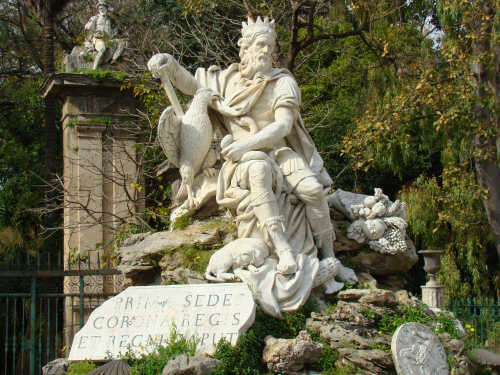
Genius of Villa Giulia
- Genius of the Port (Genius of the Pier), marble high-relief of the stone located at the entrance to the port of Palermo on via Emerico Amari. (LIM)
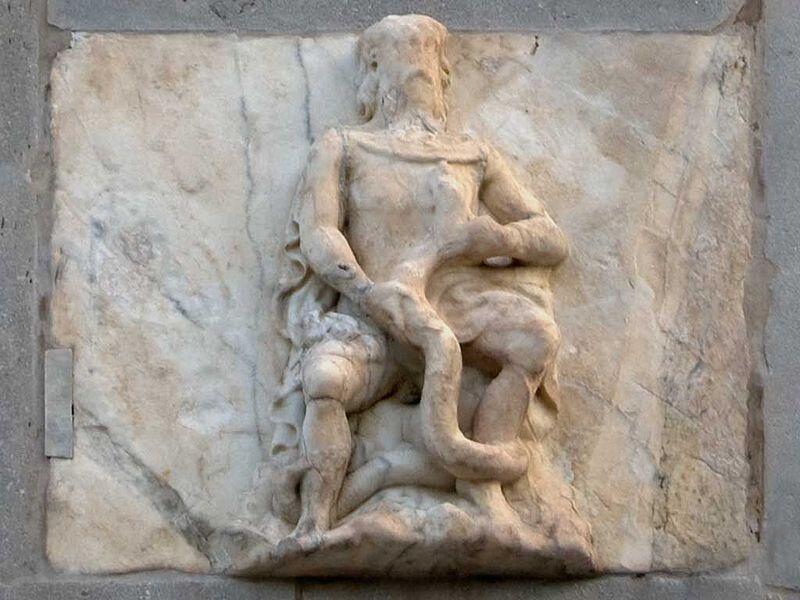
Genius of the Port (Genius of the Pier)
- Genius of Palazzo Pretorio, called in Sicilian Palermu u nicu (Palermo the little one). The statue is part of a sculptural group placed on the staircase of the Palazzo Pretorio, seat of the Town Hall of the city. (LIM)
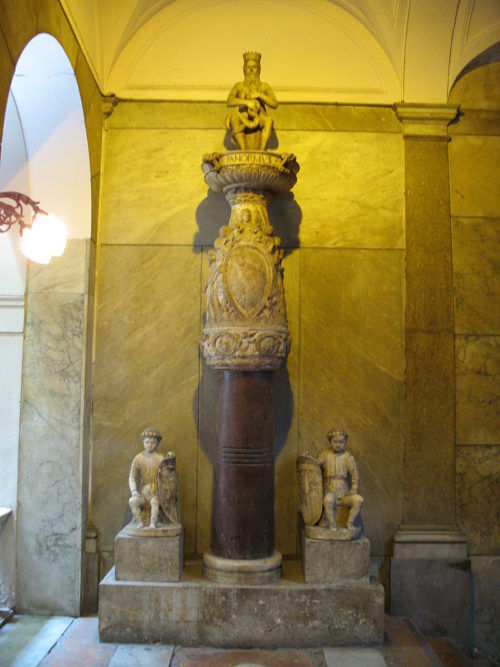
Genius of Palazzo Pretorio
- Genius of Garraffo, called in Sicilian Palermo lu grandi (Palermo the great) to distinguish it from the smaller one of Palazzo Pretorio. The sculpture was made by Pietro de Bonitate at the end of the XNUMXth century. It is located in the Vucciria, in the central niche of the aedicule built by Paolo Amato in the XNUMXth century. Not to be confused with the Garraffo Fountain or the Garraffello Fountain. (LIM)

Genius of Garraffo
- Genius of Revolution Square. Sculpture of the sixteenth century, placed on the fountain of Piazza Revolution. (LIM)

Genius of Revolution Square
- Mosaic genius, mosaic panel placed above the entrance door of the Palatine Chapel in the Norman Palace. The work was created by Pietro Casamassima in the early nineteenth century. (LIM)
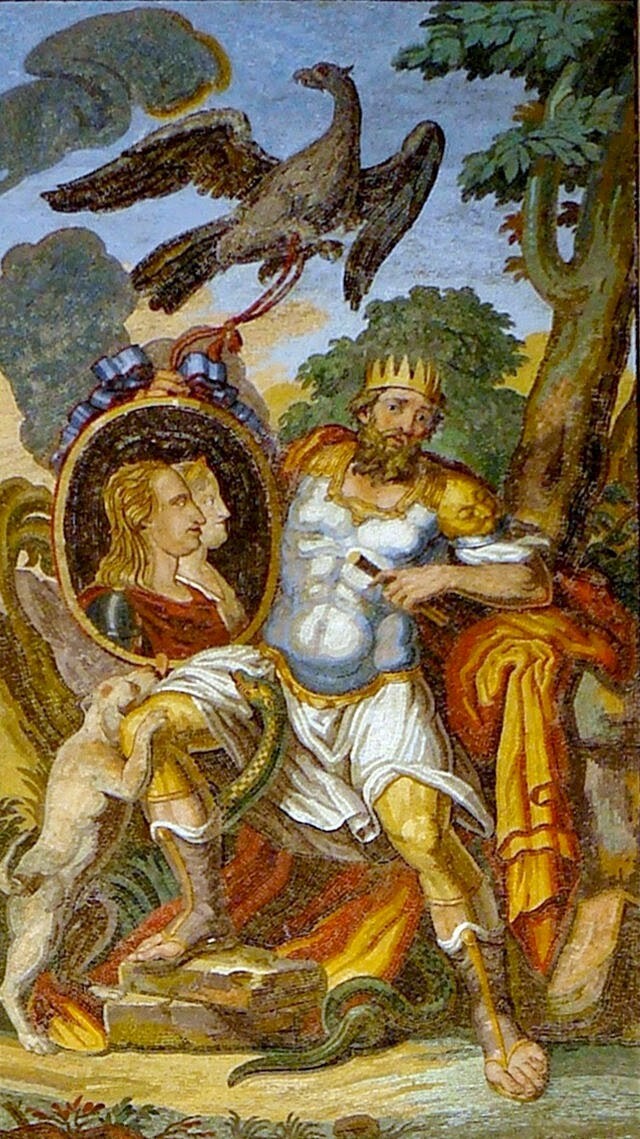
Mosaic genius
Other representations not included in the IWB:
- Genius of Villagrazia, or of Villa Fernandez. Sculptural relief of the late seventeenth century, placed at the entrance of Villa Fernandez, in via Crimi, in the district of Villagrazia in Palermo. Even if it is not a copy, the work was evidently made on the model of the Genius of the Port.
- Genius of the Apotheosis of Palermo, central figure of the fresco The Apotheosis of Palermo (1760), painted by Vito D'Anna in the ballroom of Palazzo Isnello. The fresco is considered one of the masterpieces of Sicilian painting of the eighteenth century.
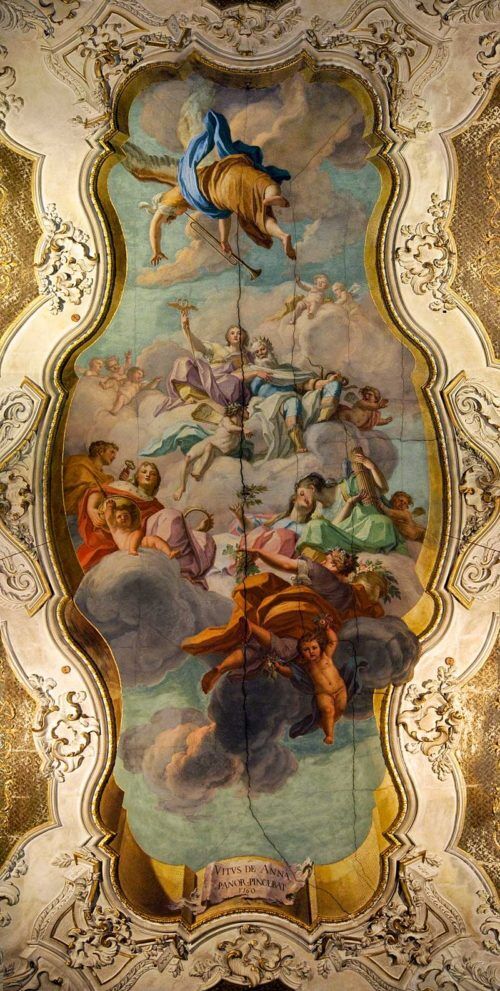
Genius of the Apotheosis of Palermo
- Genius Panormi at the Botanical Garden, sculpture in resin and marble dust, placed inside the Tropical Greenhouse of theBotanical Garden, inaugurated in 2020 and created by Domenico Pellegrino.
[1] Giuseppe La Monica: Mystery Sicily p.58
To view the places of interest on an interactive map: The Places of Genius of Palermo
----------------
Technical sheet prepared by: Region of Sicily - Department of cultural heritage and Sicilian identity - CRicd: Regional center for inventory, cataloging and documentation and Sicilian regional film library
ABSENT


